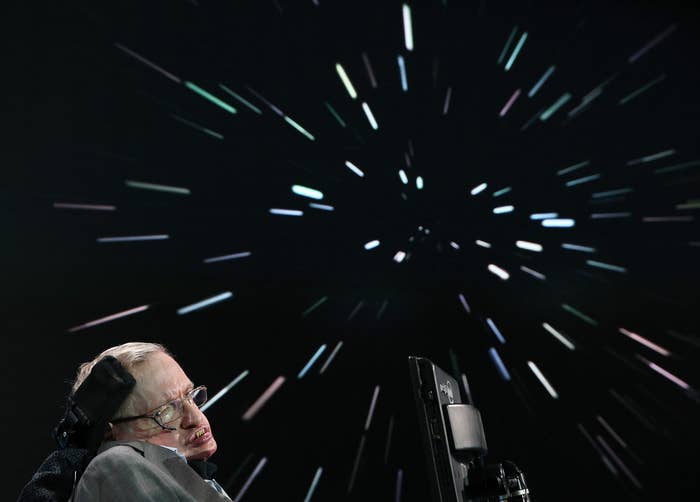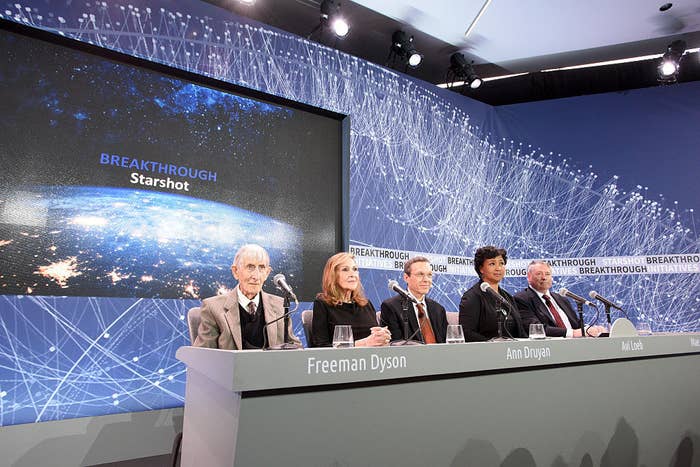
World-famous theoretical physicist Stephen Hawking and Russian billionaire Yuri Milner announced Tuesday their newest attempt to find extraterrestrial life: a project called Breakthrough Starshot.
"Today we commit to the next great leap in the cosmos," Hawking told reporters at the top of the World Trade Center in New York City. "Because we are human and our nature is to fly."
Hawking said the goal of Breakthrough Starshot was to reach Alpha Centauri, the closest star system to us, within a generation by using thousands of tiny spaceships.
Astronomers believe an Earth-like planet could exist within the "habitable zones" of Alpha Centauri, located 25 trillion miles away. It is therefore the most likely place to find life or even, as Hawking said, a possible new home for future humans.
Breakthrough Starshot's spacecrafts, which they call "nanocrafts," will be gram-scale computer chips that will include "cameras, photon thrusters, power supply, navigation and communication equipment," Avi Loeb, a Harvard scientist involved in the operation, told reporters.
A rocket would deliver a "mother ship" carrying a thousand or so of the nanocrafts into space. Once in orbit, the crafts would be propelled with thin sails and hyper-powerful laser beams shot from Earth into the universe to explore and discover. There the crafts would take pictures of their surroundings, which would take around four years to be sent back to Earth.
The nanocrafts would travel at around 20% of the speed of light, Loeb said. At that rate it would be possible to reach Alpha Centauri in around 20 years, and the potentially habitable planets within 70. Using the best currently existing technology, it would take some 78,000 years.
It is estimated the project could cost $5 billion to $10 billion, but Milner is initially investing $100 million for research and development.
Each nanocraft will cost roughly the same to make as a high-end smartphone, allowing a massive number to be sent on the journey.
There are still a number of challenges facing the creation of the nanocrafts, including the creation of the hyper-powerful laser beam — which, in order to launch the crafts, must generate the same amount of power needed for launching a large space shuttle — as well as making the crafts resistant to space accidents, such as impact with dust particles and space debris.
"As far as we can tell," Loeb assured the crowd of reporters, "there are no deal-breakers in the physics behind this project."
"This is really cool," former NASA researcher and leader of Breakthrough Starshot Pete Worden said with a smile. "From these hard challenges, onto the stars."

The panel of scientists involved with the project also includes physicist Freeman Dyson, founder of Cosmos Studios Ann Druyan, and astronaut Mae Jemison.
Hawking told the crowd that the probability of the nanocrafts finding life within the next 20 years was very low — "probably," he added, to laughter from the audience.
But he said research has suggested that "there are livable planets in our galaxy alone, and billions more in the rest of the universe," which suggests there are "others out there."
The award-wining physicist also warned the crowd that it is "unwise to keep all our eggs in one fragile basket," referring to Earth.
"Life on Earth faces danger from asteroids and supernovas, another danger from ourselves," he said.
Though the nanocrafts will potentially have the ability to find, target, and destroy asteroids heading toward our planet, "If we want to continue to exist as a species, we must find life outside ourselves," Hawking said.
In answer to a question about what intelligent life might look like Hawking joked, "Judging from the election campaign, definitely not like us."
